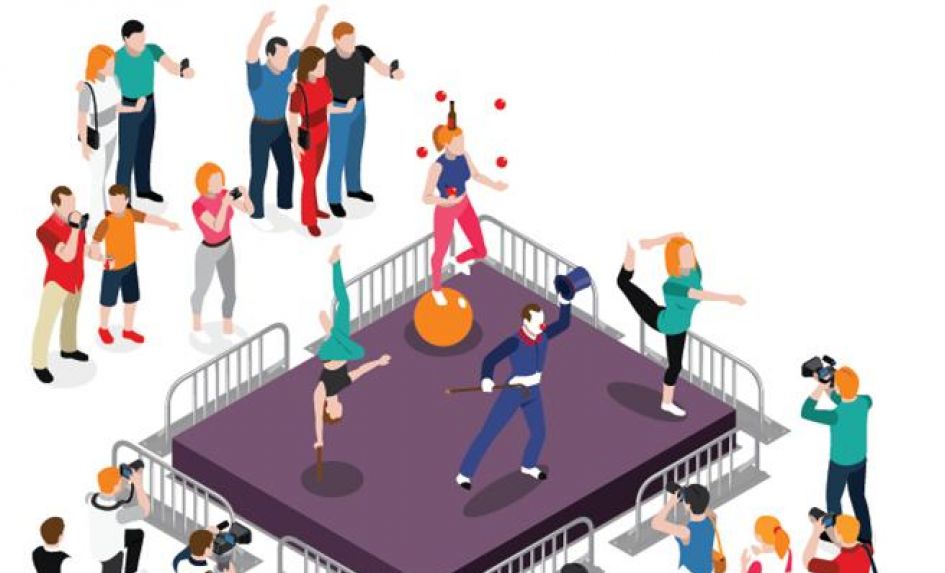1. Self-evaluate
When improving a school’s arts provision, the first thing to do is think about what you want to keep, get rid of and change. There’s a reflection game we play at Kensington Primary called ‘Keep, Ditch, Tweak’. Have everyone map out your existing provision, then think about what’s working, what isn’t and what needs changing.
2. Look for gaps
Examine the arts individually – music, dance and drama, plus visual arts such as design and technology – and look for gaps. What are you not doing? Where is your provision a little light? Assemble a taskforce of people keen to champion specific arts areas, and if possible, involve some children, parents and governors.
3. Be flexible
Continue to run your ‘Keep, Ditch, Tweak’ process throughout the year, making sure it links in to your school development plan. Be loose and flexible when it comes to your planning, and link to your SDP so that rather than entailing extra work, it instead ties into something you’ve already agreed to do.
4. Find a partner
Look for opportunities to collaborate with external artists, musicians and other performers. We ourselves collaborate within our local borough and across our Trust, but also try to establish partnerships in other areas of London. So far it’s provided a very local, yet very broad base for the children.
5. Listen to pupils
Run the ‘keep ditch, tweak’ process past your kids and check to see if what interests them marries up with the findings from your staff. Carry out learning walks across the school, taking some of the children with you and letting teachers know in advance when visiting their classrooms. Organise dedicated arts days and arts weeks.
6. Use assemblies
Start seeing assemblies as opportunities for showcasing and celebrating the inspiring talent in your school. If you plan on opening them up, make sure that parents know well in advance what’s happening and are able to attend. Try to ensure your assemblies touch on as many elements of the arts as possible.
7. Do theme weeks
Combining your arts education with dedicated theme weeks is a great way of simultaneously showcasing your pupils’ artistic achievements to the whole school, while getting everyone to recognise how important and rewarding the arts can be. It can also provide an ideal arena for giving pupils experience of performing.
8. Mix it up!
Avoid only putting on big productions at the end of each term. Instead, try to arrange things so that there’s something arts-related happening at least once a month. Do numerous ‘little things’, as opposed to two or three ‘huge things’ – otherwise you risk burning yourself out and exhausting, rather than exciting your children.
9. Get outside
Look into outdoor staging solutions that might work in your playground. Giving the children access to a permanent or semi-permanent stage area will encourage them to practice performance and directing themselves during break times, while also providing a great place for classwork during the day.
10. Think big
If you haven’t already, consider equipping your main hall with a collapsible stage that can be easily set up and disassembled. Above all, though, you should be wary of falling back on established approaches to your arts education; instead, always be open to changing the way you’ve hitherto done things.
“The arts aren’t just something we do on a friday”
Meredith Elliott explains how at Kensington Primary, performing arts is deeply embedded in everything the school does
Instruments
We’re an inner city London School with just over 500 children. The boroughs that make up our catchment area have high levels of poverty, and deprivation, and a significant portion of the local population is transient.
Many children show up halfway through the year and often don’t stay for long. With a lot of kids who are in and out, we often have a short amount of time to do the best that we can for them. With the help of an ‘Every Child A Musician’ grant, all of our children are given the opportunity to learn a musical instrument at key stage 2.
They begin in year 3 with a flutophone, before moving on to the ukulele in year 4. In year 5 they get to choose between clarinet or guitar, and can then opt to continue or swap in year 6.
Performances
As well as organising regular assemblies that can serve as class concerts, we task each of our year groups with organising two performances per year. These are attended by whole school, and parents and members of the local community are given the chance to watch too.
They typically involve involve a combination of songs, dance and musical performances, sometimes combined with elements of visual arts and design relating to a particular learning topic.
Our theme weeks are always linked in some way to art, design and music, the key to which is our approach to multimodal learning. The arts aren’t just something we do on a Friday afternoon – we use the arts to improve our data, progress and achievement in maths, English and reading.
Venues
For the last three years we’ve taken part in Music at the Tower – an event the Tower of London puts on in partnership with Water City Music that’s free for schools to join.
Pupils get to perform alongside other schools on awesome stages at an iconic site before thousands of visitors. Their families are invited too, and get free admission to the Tower.
We organise several groups of children who rehearse for the event separately. On the day, we then combine and sing together over three separate performances in a space that’s more realistic in terms of giving pupils experience of performing in a venue.
Once you’ve started using your outdoor space for arts purposes, I’d suggest seeking opportunities for collaborating with local venues.
Meredith Elliott is a teacher and performing arts lead at Kensington Primary School, as well as a mentor and teacher trainer based in East London










